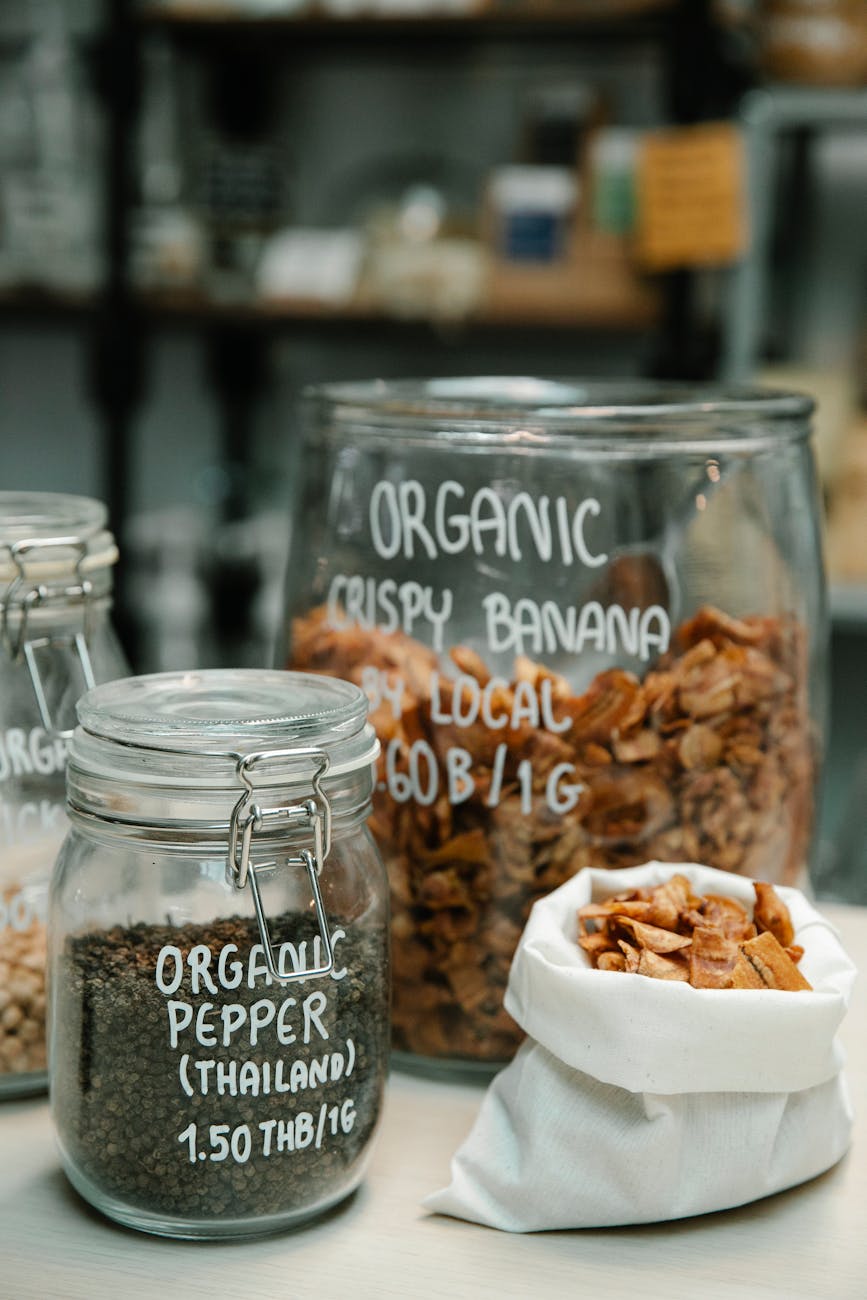Discovering Thailand’s Culinary Treasures: Are Local Ingredients the Secret to Unforgettable Flavor?
Embarking on a trip to Thailand is not just about exploring picturesque beaches and ancient temples; it’s also a flavorful journey into one of the world’s most vibrant culinary scenes. From the bustling street food stalls to high-end restaurants, the intoxicating aromas and vivid colors of Thai cuisine are simply irresistible. But what makes these dishes so unforgettable? The answer rests in the country’s diverse local ingredients, each bursting with unique flavors that elevate traditional recipes to extraordinary heights. Experience the rich tapestry of tastes, aromas, and textures as you explore the secrets behind Thailand’s exceptional gastronomic offerings.
This blog post will delve into the remarkable world of Thailand’s local ingredients and how they serve as the backbone for unforgettable flavors. Not only will you discover the variety of ingredients used in Thai cooking, but you will also find actionable insights on how to incorporate these flavors into your own kitchen. Join us as we explore the essence of Thai cuisine, uncovering the secrets that make it a global favorite!
Table of Contents
- Exploring Local Ingredients
- Flavor Profiles in Thai Cuisine
- Mastering Thai Cooking Techniques
- Iconic Thai Dishes
- Actionable Insights: Bringing Thailand to Your Kitchen
- Embarking on Your Culinary Adventure
Exploring Local Ingredients
Thailand’s diverse climate and rich agricultural landscape provide a cornucopia of local ingredients. The nation’s cuisine prominently features fresh vegetables, aromatic herbs, and vibrant spices, all of which contribute to its distinctive flavor. For instance, Thai basil, lemongrass, and galangal aren’t just staples; they are essential balance creators in every dish. Each ingredient plays a critical role, not only in flavor but also in texture and visual appeal. When combined, these fresh elements create a harmonious experience that captivates food lovers. The government’s support for local farmers further enriches these offerings, ensuring that authentic tastes reach the plates of both locals and tourists alike.
Moreover, it is important to celebrate the rich biodiversity in regions such as Chiang Mai, which is famous for its organically grown crops. Essential adaptations of these ingredients, often derived from years of tradition, are carefully preserved and passed down through generations. Each family essentially crafts its own flavor profile based on local resources, ensuring that when you eat Thai food, you take a bite of history and culture. Understanding these local ingredients will not only deepen your appreciation for Thai cuisine but also inspire you to bring these vibrant flavors into your kitchen.
Flavor Profiles in Thai Cuisine
The magic of Thailand’s culinary art lies in its masterful fusion of flavors. The hallmark of Thai cooking is the balance between five core tastes: sweet, sour, salty, bitter, and umami. This intricate layering of flavors is what differentiates Thai cuisine from others and makes each dish an exploratory adventure for the palate. For example, the use of tamarind not only adds a citrusy tang but also interesting undertones that enhance the depth of savory ingredients. Similarly, palm sugar is used to deliver a subtle sweetness, harmonizing spicy and acidic notes.
This flavor balancing act varies from region to region, reflecting local customs and available ingredients. In the south, you’ll find dishes that are rich with coconut milk and fresh seafood, whereas the northeast, known for its som tam (green papaya salad), leans heavily on the freshness of herbs and chilies. One bite of these authentic dishes transports you to the heart of Thailand, as the flavors weave a story that is distinctly Thai. Understanding these flavor profiles not only enhances your culinary repertoire but also allows an appreciation of the creativity and passion that goes into each dish.
Mastering Thai Cooking Techniques
Once you are acquainted with the ingredients and flavors of Thai cuisine, it’s time to delve into the cooking techniques that bring these flavors to life. Techniques such as stir-frying, steaming, and grilling play a significant role in achieving that trademark taste and texture that Thai dishes are known for. Stir-frying, for example, is not just a quick method; it’s an art that allows ingredients to retain their color, crunch, and nutritional value while being infused with bold flavors.
Additionally, herbal infusions and marinades take center stage in Thai cooking, enhancing the overall experience while preserving the vibrancy of the fresh ingredients. The practice of prepping and cooking is often communal, with families gathering around to prepare meals together. This not only fosters a warm atmosphere but also gives rise to time-honored recipes that continue to evolve. By learning these techniques, you can replicate Thailand’s flavors at home and impress your friends and family with authentic dishes that burst with freshness and creativity.
Iconic Thai Dishes
While exploring Thai cuisine, you’ll encounter a dazzling array of signature dishes that embody the essence of this vibrant culture. Classics such as Pad Thai with its delightful mix of rice noodles, fresh herbs, and savory sauces showcase the balance of flavors that is synonymous with Thai food. Tom Yum Goong, the spicy shrimp soup, takes your taste buds on a thrilling adventure with its zesty broth infused with lemongrass and kaffir lime leaves. Not to forget, the aromatic Green Curry is another hallmark dish that intertwines the creaminess of coconut milk with the heat of green chilies, creating an unforgettable explosion of taste.
Street food is a cornerstone of Thai cuisine, offering another layer of authenticity to your culinary exploration. Vendors serve iconic dishes like Som Tam (green papaya salad) and Satay skewers with perfectly balanced dipping sauces that are both simple yet sumptuous. Every corner of Thailand reveals a new culinary gem, embodying the distinct regional flavors and traditional preparations that make each meal a unique adventure. Embrace the opportunity to indulge in these iconic dishes, allowing yourself to be transported to the heart of Thai culture with every bite.
Actionable Insights: Bringing Thailand to Your Kitchen
To create unforgettable Thai dishes at home, start by embracing local ingredients that you can find at your nearest market or grocery store. Fresh herbs such as basil and cilantro are imperative as they enhance the aroma and flavor of your meals. Experiment with Thai chili paste or curry pastes to give depth to your sauces and soups. Marrying these ingredients with traditional cooking methods and a few secret techniques—like marinating meats or balancing sweet and spicy components—will yield stunning results.
Taking a class with a local Thai chef is another great way to expand your skills while picking up invaluable tips and tricks. Online platforms now offer virtual classes led by expert chefs who can guide you through the intricate processes. This hands-on experience will deepen your understanding and appreciation of the art behind Thai cooking, giving you the confidence to experiment and create your own dishes. Invite friends and family over for a Thai-themed dinner, where you can showcase your newfound skills and share the delightful flavors of Thailand with those you cherish.
Embarking on Your Culinary Adventure
Your journey into the depths of Thailand’s culinary world is just beginning. Whether you enjoy the ambiance of a street vendor or the elegance of a fine dining establishment, the richness of local ingredients is the secret to magical flavors that linger long after the meal is over. Discover culinary delights that will elevate your taste buds and inspire your next meal preparation at home. With every bite, you unlock new experiences, flavors, and memories that will last a lifetime. Set yourself on a path of exploration and savor the magic that the wonderful world of Thai cuisine has to offer.
Frequently Asked Questions
What makes Thai cuisine distinct from other Asian cuisines?
Thai cuisine is distinguished by its unique balance of five primary flavors: sweet, sour, salty, bitter, and umami. The use of fresh herbs, spicy ingredients, and regional elements creates a distinctive culinary identity that sets it apart from neighboring countries’ food.
Are there vegetarian options in Thai cuisine?
Absolutely! Thai cuisine offers a plethora of vegetarian and vegan dishes emphasizing fresh vegetables, tofu, and grains, all beautifully infused with the same lively flavors. Dishes like Pad Thai can easily be adapted using tofu and a variety of vegetables.
Can I find Thai ingredients easily outside of Thailand?
Many Asian grocery stores and supermarkets worldwide carry a wide range of Thai ingredients, such as fish sauce, coconut milk, and various spices. Online retailers also offer these items, making it easier than ever to recreate authentic dishes at home.
What are some beginner-friendly Thai recipes?
Start with simple recipes like Pad Thai, spring rolls, or green curry. These dishes require accessible ingredients and can be easily tailored to suit your taste preferences while providing an authentic Thai experience.
What cooking techniques are essential for Thai cuisine?
Key techniques include stir-frying, steaming, and marinating. Familiarizing yourself with these methods will elevate your cooking skills and allow you to achieve the fine balance of flavors typical of Thai dishes.
Image Credit: Pexels





